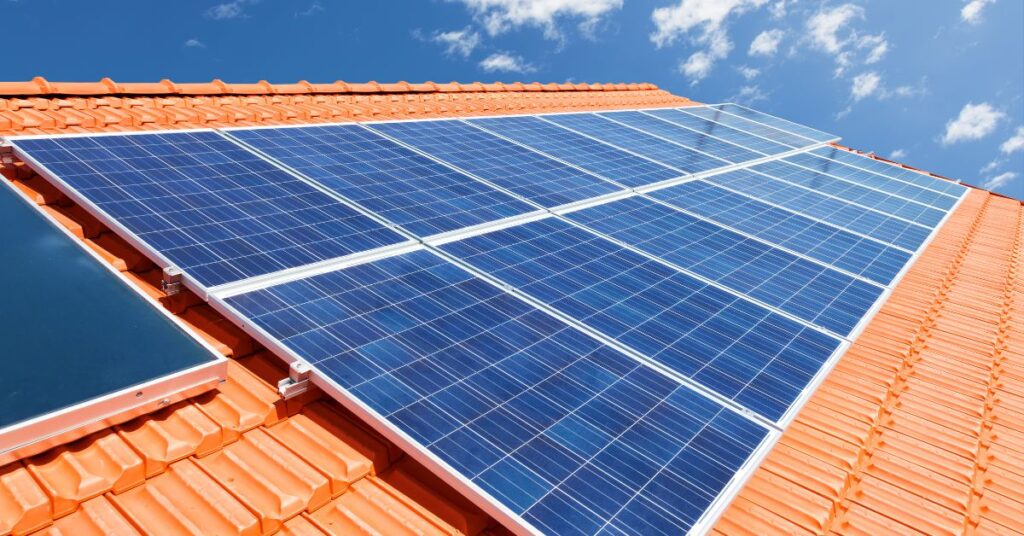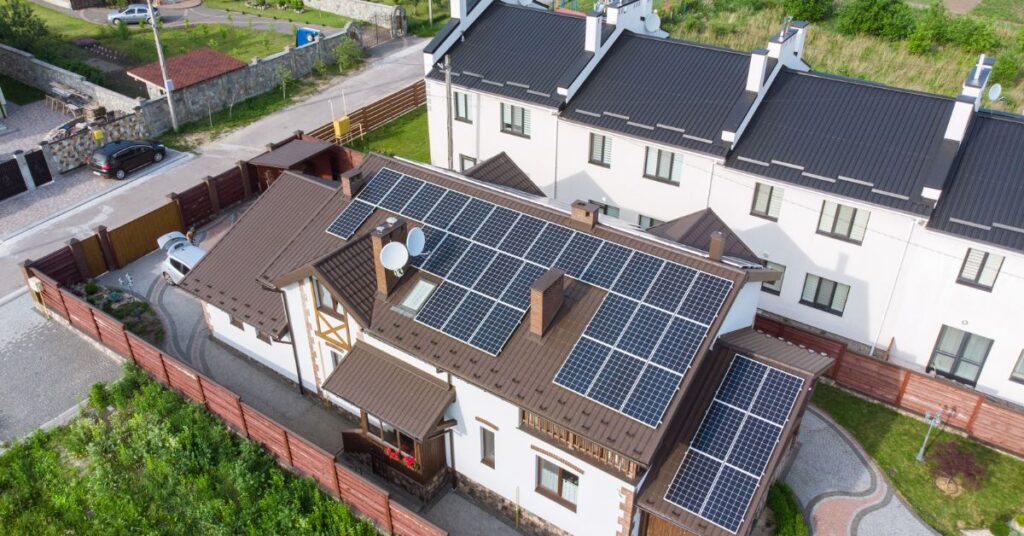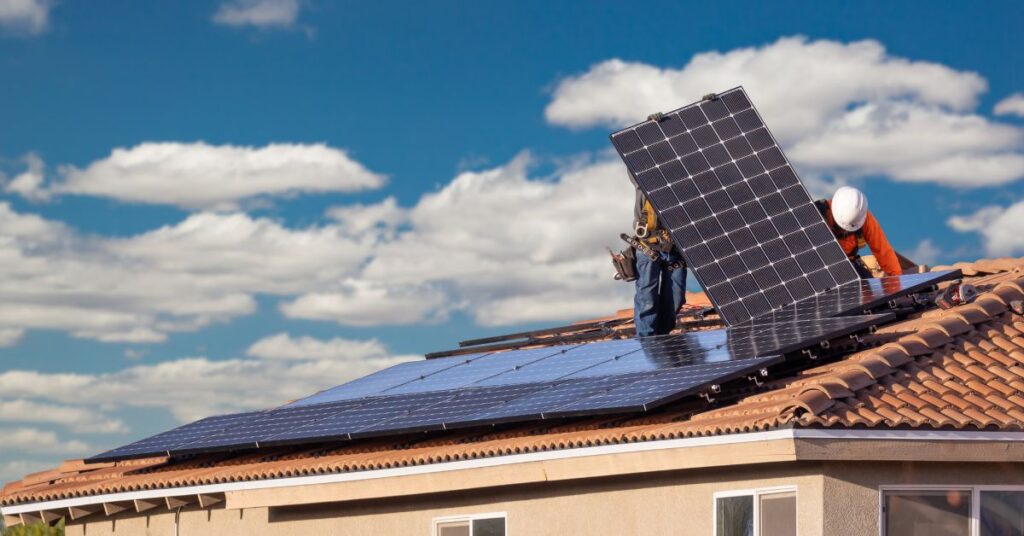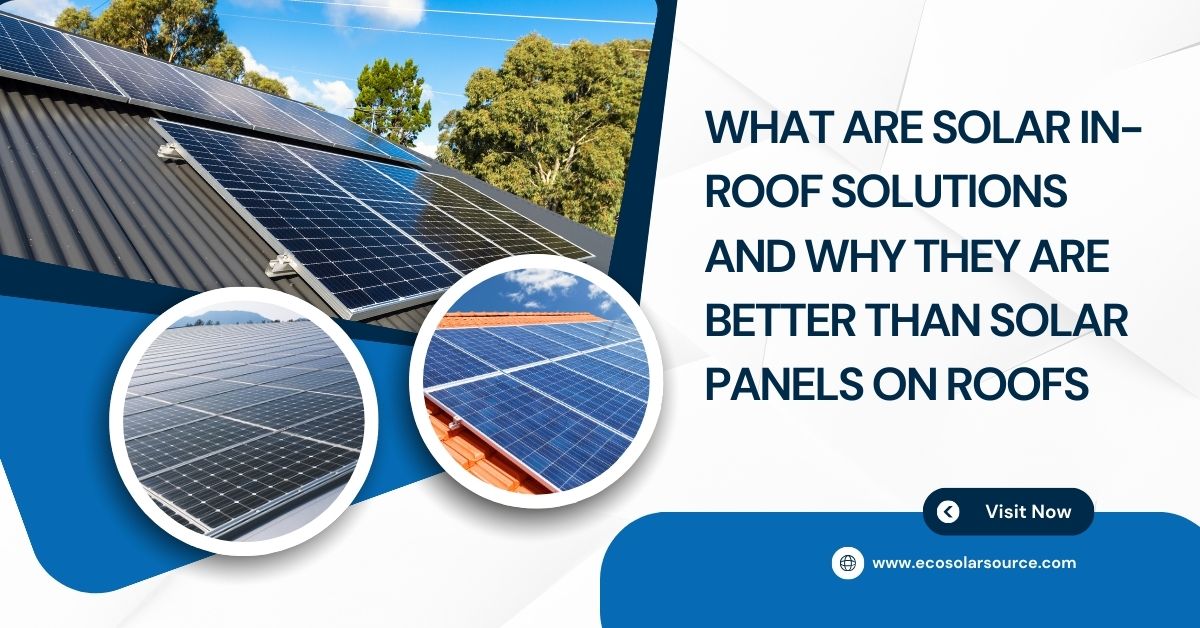What Are Solar In-Roof Solutions and Why They Are Better than Solar Panels on Roofs
Know the details about What are Solar In-Roof Solutions and Why they are Better than Solar Panels on Roofs. Discover the benefits of solar in-roof solutions, a sleek and efficient alternative to traditional solar panels. Learn how in-roof systems integrate seamlessly into your home’s architecture, enhancing aesthetics while maximizing energy efficiency. Explore why they outperform traditional panels with improved durability, better weatherproofing, and enhanced thermal performance.
This guide explains how in-roof solar solutions can increase your property value, reduce long-term costs, and contribute to a sustainable future. Whether you’re building a new home or upgrading your current setup, find out why in-roof solar is the superior choice for eco-conscious homeowners seeking performance and style in their solar energy systems.
Table of Contents
What Are Solar In-Roof Solutions and Why They Are Better Than Solar Panels on Roofs?
The adoption of solar energy has been on the rise, with homeowners and businesses striving for cleaner, more sustainable energy sources. Traditionally, rooftop solar installations have involved attaching photovoltaic (PV) panels to the existing roof structure using mounting systems. While effective, these systems come with their own set of challenges, such as aesthetic concerns, weight limitations, and long-term maintenance needs. Enter solar in-roof solutions, a more integrated and efficient approach to harnessing solar energy. This article will delve deep into what solar in-roof solutions are, their benefits over conventional rooftop solar panels, and why they represent the future of solar technology.
Understanding Solar In-Roof Solutions
Solar in-roof solutions, also known as solar roof tiles, solar shingles, or integrated solar systems, are photovoltaic systems designed to become an integral part of a building’s roof. Unlike traditional panels, which are mounted on top of an existing roof, in-roof solar systems replace sections of the roofing material entirely. These systems seamlessly integrate into the roof, serving dual purposes: acting as the primary roof covering and generating electricity.

Key Features of Solar In-Roof Systems
- Design Integration: These systems are built to blend with the overall design of the building, maintaining architectural aesthetics.
- Dual Functionality: They protect weather elements while simultaneously generating power.
- Customizable Layouts: Available in various styles and finishes, these systems can be customized to fit different roof shapes and sizes.
- Durability: Typically designed to withstand harsh weather conditions, in-roof solar tiles are robust and long-lasting.
Some notable manufacturers of in-roof solar solutions include Tesla (Solar Roof), SunTegra, and CertainTeed. Each of these brands focuses on creating highly efficient, aesthetically pleasing solutions tailored to modern needs.
How Solar In-Roof Solutions Differ from Traditional Solar Panels
To fully understand why in-roof systems are gaining traction, it’s essential to highlight how they differ from traditional solar panel installations:
- Integration vs. Addition:
- Traditional panels are added onto an existing roof using brackets and mounts. They protrude outward, creating a visible, often bulky appearance.
- In-roof solutions integrate into the roof, offering a flush, sleek finish that resembles a standard roof.
- Aesthetic Appeal:
- Rooftop panels are often visible and can disrupt the architectural symmetry of a building.
- In-roof systems are designed to be nearly indistinguishable from conventional roofing materials, preserving the building’s visual appeal.
- Material and Durability:
- Traditional panels rely on external mounting systems that can add weight and sometimes stress to the existing roof structure.
- Solar shingles and tiles are built with durable materials like tempered glass or metal, designed to replace standard roofing materials entirely.
- Cost Considerations:
- While traditional panels are often cheaper to install initially, they may require additional costs for maintenance or roof reinforcement.
- In-roof systems have higher upfront costs but can offset these by eliminating the need for traditional roofing materials and offering better long-term durability.
The Benefits of Solar In-Roof Solutions
Solar in-roof solutions provide a range of advantages that make them a compelling alternative to traditional rooftop solar installations:

1. Aesthetic Superiority
For homeowners concerned about the visual impact of solar installations, in-roof systems are a game-changer. They offer a minimalist, modern look, blending seamlessly with the roof. This is particularly advantageous for high-value properties where aesthetics significantly impact resale value.
2. Space Efficiency
By integrating directly into the roof, in-roof solutions eliminate the need for mounting structures and additional hardware, saving space and reducing clutter. This is particularly beneficial for homes with limited roof space or complex roof designs.
3. Enhanced Weather Protection
Traditional solar panels often leave gaps between the panel and the roof, which can lead to water pooling, debris accumulation, or even pest intrusion. In contrast, in-roof systems create a sealed, weatherproof surface that offers superior protection against rain, snow, and wind.
4. Lower Maintenance Costs
Since in-roof systems replace the roofing material itself, they reduce the wear and tear associated with traditional roofing. Moreover, the streamlined design minimizes areas where dirt and debris can accumulate, making cleaning and maintenance easier.
5. Increased Energy Efficiency
In-roof solar systems are often more efficient due to their integrated design. The seamless fit reduces heat loss and enhances energy capture, especially in climates where insulation is critical.
6. Cost-Effectiveness Over Time
Although the upfront costs of in-roof systems are higher, the long-term savings are substantial. These systems reduce the need for traditional roofing materials and last longer than standard solar panels, providing better value over their lifecycle.
7. Property Value Boost
Homes equipped with integrated solar systems are highly attractive to eco-conscious buyers. The combination of energy efficiency, aesthetic appeal, and durability can significantly increase a property’s resale value.
Why In-Roof Solutions Are Better Than Traditional Panels
A Holistic Energy Solution
Traditional solar panels are primarily focused on energy generation, while in-roof systems combine functionality, efficiency, and aesthetics. For homeowners and architects looking for a seamless energy solution, in-roof systems represent the perfect blend of form and function.
Sustainability
The integrated nature of solar in-roof systems often results in a lower carbon footprint during production and installation. By replacing roofing materials and reducing the need for mounting hardware, these systems are inherently more sustainable.
Longevity
In-roof systems are designed to last as long as—or longer than—the roof itself. Many traditional solar panels, while durable, may require replacement or adjustments before the lifespan of the underlying roof ends.
Simplified Installation
For new builds or significant roof renovations, installing an in-roof solar system is a streamlined process. It eliminates the need for a separate roof and panel installation, reducing labor and time costs.
Better for Heritage and Modern Architecture
For historical or architecturally sensitive buildings, in-roof systems provide a non-invasive solution that maintains the original character of the structure. Similarly, modern architectural designs benefit from the sleek and minimalist aesthetic of these systems.
Challenges of Solar In-Roof Solutions
While in-roof solar systems have numerous benefits, there are some challenges to consider:

- Higher Initial Costs: The upfront cost of in-roof solutions is higher than traditional systems, primarily due to the technology and materials used.
- Limited Retrofitting Options: These systems are best suited for new constructions or complete roof replacements. Retrofitting them onto an existing roof can be more complex and expensive.
- Installer Expertise: In-roof systems require specialized installation skills, which can limit the availability of qualified installers in some regions.
- Maintenance Complexity: While maintenance requirements are generally lower, accessing individual tiles for repairs can be more complicated than servicing traditional panels.
Use Cases and Ideal Scenarios for In-Roof Solutions
- New Residential Constructions: Builders and developers can integrate solar in-roof systems into new homes, offering eco-friendly solutions from the outset.
- Roof Replacements: When replacing an aging roof, homeowners can opt for an in-roof solar system, eliminating the need for separate roofing materials.
- High-End Architectural Projects: Luxury homes and buildings with strict aesthetic requirements are ideal candidates for in-roof solutions.
- Net-Zero Energy Buildings: For projects aiming to achieve net-zero energy consumption, in-roof systems offer a holistic approach to energy generation and conservation.
The Future of Solar In-Roof Technology
The rise of solar in-roof solutions is indicative of a broader trend toward integrated, efficient, and aesthetically pleasing renewable energy systems. As technology advances, we can expect:
- Improved Efficiency: Innovations in PV technology will likely make in-roof systems more efficient, capturing more energy per square foot.
- Cost Reductions: Mass production and increased competition will drive down costs, making these systems more accessible.
- Wider Adoption: As consumers prioritize aesthetics and sustainability, in-roof solutions will become a mainstream choice for solar installations.
FAQs About What are Solar In-Roof Solutions and Why they are Better than Solar Panels on Roofs
Conclusion
Solar in-roof solutions represent a significant leap forward in the quest for sustainable, renewable energy systems. By integrating seamlessly into the roof, these systems offer unmatched aesthetic appeal, durability, and functionality. While the higher initial costs and installation requirements may pose challenges, the long-term benefits far outweigh these hurdles. For homeowners and architects looking to marry form and function, solar in-roof solutions are undoubtedly a superior choice over traditional rooftop panels. As technology continues to evolve, these systems will play a crucial role in shaping the future of green energy adoption.
Click here to learn more about Linking the Dots Between Multiple Advantages of Solar Energy

